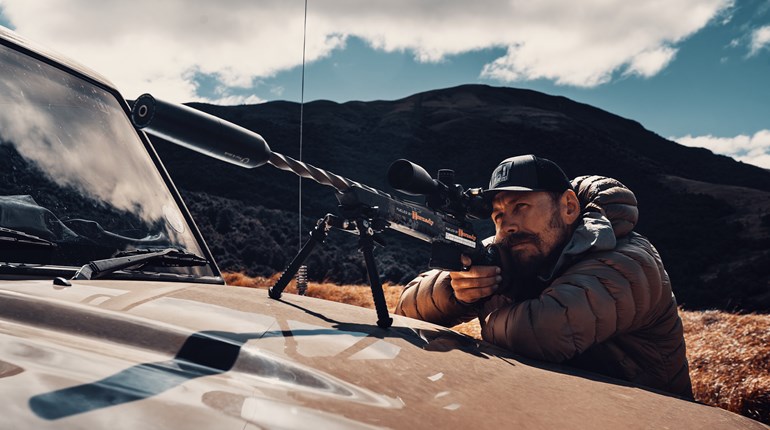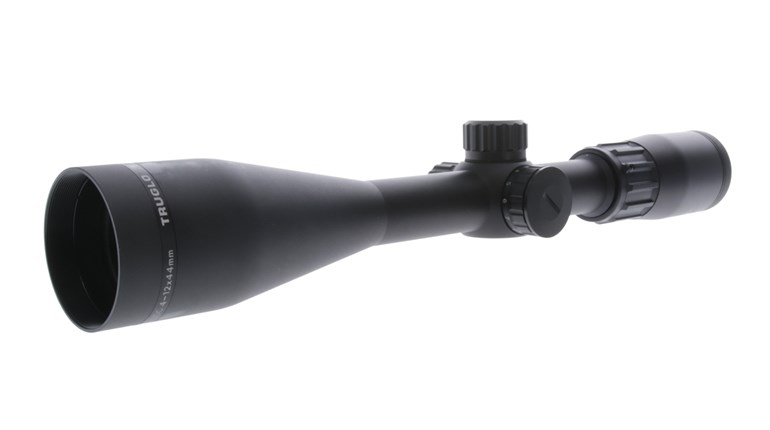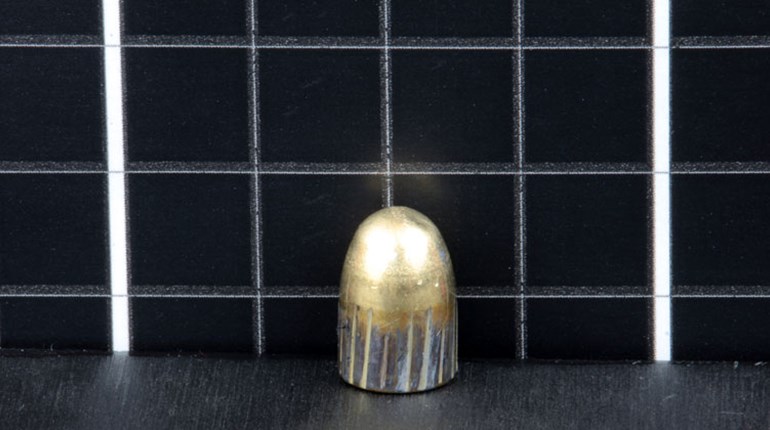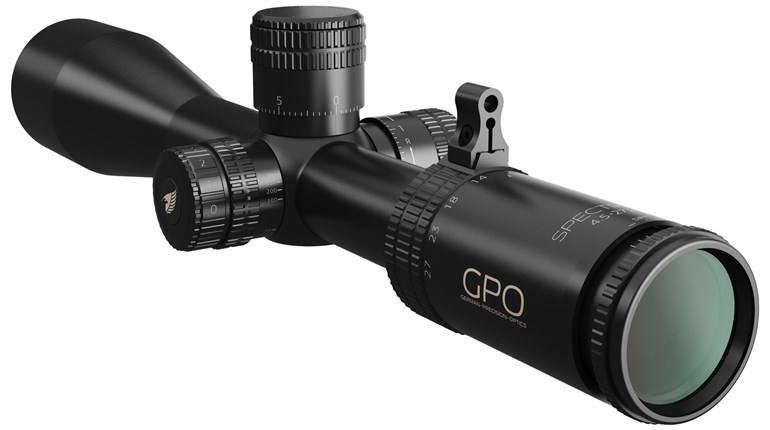
The subject is confusing because humans relate things to known standards. We cannot measure stuff without reference to something we know and understand, like inches. You'll ask your buddy, "How big was that smallmouth bass?" He'll say, "Oh, about 19 inches." And, you'll know exactly how long that fish was, no matter how far his arms are stretched apart. When it comes to shooting at long range, it's not all about inches.
There are essentially three different ways to correct for trajectory or wind when shooting at long range; mil, MOA and the inch. The inch method is most generally employed by something called Kentucky Windage; holding off the target with your sights to compensate for wind deflection and/or bullet drop. Depite common belief, it's not really a WAG (wild-ass guess) it's more of a SWAG (scientific wild-ass guess).
Mils and MOA differ from an inch because they are angular, not linear, measurements. An inch equals an inch no matter how far away it is.
A mil or an MOA linear equivalent increases proportionally with distance. With the MOA and mil systems, you correct the position of the reticle inside the scope based on wind deflection and trajectory of the bullet at the target's distance. You can also apply a more-sophisticated version of Kentucky Windage by using a mil-dot reticle. Which system is best? It depends as much on the situation as the shooter. Here's how they work.
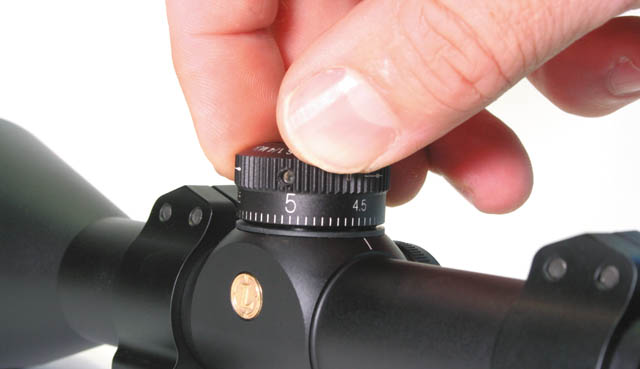
The Inch Method
This is easy; an inch is 1⁄12 of a foot. If an AK-47 measures 36 inches at 1,000 yards (that's one mil, but more on that later), guess what? When it's at 753 yards, it's still 36 incheslong. If a bullet drops 36 inches at 500 yards, just hold 3 feet high for your next shot.
MOA Method
MOA stands for minute of angle. There are 360 degrees in a circle and each degree is divided into 60 minutes. If we round to the nearest 1⁄100 of an inch, at 100 yards 1 degree measures 62.83 inches. One MOA, 1⁄60 of that, measures 1.047 inches. While 1 MOA at 100 yards equals 1.047 inches, at 200 yards it equals 2.094 inches (2 x 1.047). To calculate MOA at any distance, multiply 1.047 by the distance in yards and divide by 100.
On riflescopes with 1⁄4-MOA adjustments, each click equals .261 inch at 100 yards. There's another measure known as Shooter's MOA (SMOA)—rounding down MOA's true measure of 1.047 inches at 100 yards to a much-simpler-to-calculate with 1 inch at 100 yards. Most scopes have true 1⁄4-MOA click adjustments, but some have 1⁄4-SMOA click adjustments. Does it matter? The difference in an MOA and a SMOA is .047 inch at 100 yards or slightly less than 1⁄2 inch at 1,000 yards so the answer is: Precisely yes, practically no.
The Mil Method
Mil (milliradian) is another angular measurement. There are 6.2832 (π x 2) radians per circle. There are 1,000 mils per radian so, there are 6,283.2 mils in a circle. There are 21,600 MOA in a circle, so a little quick division determines there are 3.4377 MOA per mil. At 100 yards, 3.4377 MOA equals 3.599 inches (3.4377 x 1.047). Rounded up, one mil equals 3.6 inches at 100 yards.
A mil is so large, it's broken it into tenths in order to make precise adjustments. If you have a riflescope with mil adjustments, each click equals 1⁄10 mil. A tenth of a mil equals .36 inch or .9144 centimeterat 100 yards. Since 1⁄10 of a mil is an angular measurement, it will be slightly larger at 100 meters than at 100 yards because 100 meters equals 109.361 yards. At 100 meters, 1⁄10 of a mil equals .9999 centimeter. Practically speaking, 1⁄10 of a mil equals 1 centimeter at 100 meters.
Because mil, like MOA, is an angular measure, the length it represents increases with distance. For example, 1 mil at 100 yards equals 3.6 inches and 7.2 inches at 200 yards. To calculate how many inches are in a mil at any distance, multiply 3.6 times the distance in yards and divide by 100.
Subtension
Subtension, the measurement a section of a reticle covers at a certain range, is also important, especially when trying to estimate range or calculate for wind or trajectory by holding off the target. Like mil and MOA, subtension is an angular measurement. Where things get complicated is with a mil-dot reticle and a scope with 1⁄4-MOA clicks.
If you see by your mil-dot reticle your bullet splashes 3.5 mils low at 453 yards, how many 1⁄4-MOA clicks would it take to put you on target? The answer is 48, but how do you calculate this? First, convert mils to MOA. There are 3.4377 MOA per mil so multiply 3.4377 times the correction (3.5 mils) and you find there are 12.03 (12) MOA in 3.5 mils. Since each click is 1⁄4 of an MOA you would need four clicks per MOA (4 x 12 = 48).
Want more confusion? Reticle placement affects subtension. Reticles in the first focal plane maintain the same relationship to the target regardless of magnification. Reticles in the second focal plane cause the subtension/relationship to change as magnification is altered. Mil-dot or ranging reticles set in the second focal plane are usually calibrated to work at the scope's maximum magnification. Alternatively, you can turn the power selector to half the maximum magnification, doubling the subtensions of the reticle. This might be necessary if at maximum magnification rifle wobble and/or excessive mirage make the target difficult to see. Keep in mind the magnification indicator on the riflescope may not represent the exact magnification.
Ranging with a Reticle
How do you range with a reticle? It's simple really. Well kinda, as long as you know the size of the target. Measure the target with your reticle and calculate at what distance that target would match the subtension measurement you made. For example, let's say the troll shooting at you measures .8 mil across the shoulders. We know a troll's shoulders are 22 inches wide. Really, that's true, unless it's a midget troll. Now, we just need to calculate at what range .8 mil equals 22 inches.
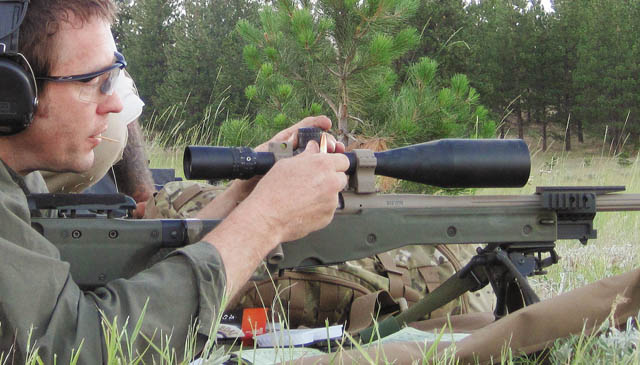
This requires some heavy-duty ciphering on a calculator. One mil equals 36 inches at 1,000 yards. At 1,000 yards .8 mil is 80 percent of 36 inches or 28.8 inches. If .8 mil equals 28.8 inches at 1,000 yards, then it would equal 22 inches at 763.8 yards [(22 x 1000)/28.8]. Too confusing? Then multiply the size of the target in yards (.611 for 22 inches) by 1,000 and divide that by the size of the target in mils (.8). The result is the same. By the time you work it out, the troll may have shot you, overrun your position and knitted a sweater. For this reason, most savvy shooters have a chart listing the size (in mils) of common items, like trolls and AK-47s, at certain distances so they can make a quick guess at the range.
Just so you know, not all mil-dot reticles are equal; the dots and the spaces between them have different subtensions, depending on the manufacturer. You can estimate range with the simple, tried-and-true, duplex reticle by determining the subtension between the intersection of the cross wires and the point on the wire where it tapers to a smaller thickness.
Practical Application
This is all really one big math problem that makes my head hurt. I don't think long-range shooting should require a calculator or a bottle of ibuprofen. Unless you shoot at long range a great deal, using mils and MOA to estimate range with a reticle and correct for bullet drop and wind can open the door for a lot of gremlins.
Wind, you say? I wish there was an easy way to explain doping wind. When Marine snipers make scope adjustments for wind, they pull the bullet right or push it left by tenths of mils. Most windage adjustments turn clockwise for left, which is away from the shooter (hence the term push), and counter-clockwise for right (which is toward the shooter hence pull).
Aside from the Kentucky Windage SWAG method, the only way to accurately guess for wind is to run a ballistics program and record the wind drift for your load for various wind speeds and angles. You can record this in inches or by the number of 1⁄4-MOA or 1⁄10-mil clicks. If this pre-calculation and your wind angle and speed guess works, you're a hero. If it doesn't, you'll need to adjust. If you're not intimate with mil and MOA measurements, you'll have to get out a calculator to figure how many clicks it takes for the error you observed.
According to former Marine sniper Caylen Wojcik of Central Cascade Precision Training, "It is safe to say that the era of MOA scopes (in a tactical application) is over and the new era of mil scopes is here to stay." Modern Marine snipers work with the mil method every day. They don't think in inches, they think in mils. If you learn the mil system and work with it frequently, it has advantages; it works perfectly with a mil-dot reticle and it takes fewer clicks than the MOA method to make corrections.
The MOA system might be more user friendly for the average shooter because an MOA is comparable to an inch, at least at 100 yards. Where it requires practice and math is when you're trying to make a correction at say, 523 or some other range that does not end in two zeros. Then you'll need to know what each 1⁄4-MOA click equals at that range. You do this by multiplying .26 (1⁄4 MOA) by the distance to the target in yards and dividing by 100. In the case of 523 yards, one, 1⁄4-MOA click would equal 1.35 inches.
The Easy Way Out
I'm an inch guy. I know what an inch looks like at any distance and I don't shoot long range enough to become intimate with the angular mil or MOA methods. If my spotter tells me I hit 7 inches low, I will make a 7-inch Kentucky Windage correction and pull the trigger. I can also do simple math in my head remembering one, 1⁄4-MOA click equals about, 1⁄4 inch at 100 yards, 1 inch at 400 yards, 2 inches at 800 yards.
Even simpler are custom target turrets. Leupold will engrave turrets for its VXIII CDS riflescopes to match your load's ballistics. This might be the best or average-guy approach—it's definitely mine—to long-range elevation adjustments because it's simple, fast and requires no math. If the range is 642 yards, you turn the dial to 6.5, hold dead-on and shoot. You can still apply the MOA system with the Leupold CDS scopes because they use 1⁄4-MOA adjustments.
Another thing that can become confusing when you start turning turrets is going back to zero. Some turrets will give you 15 MOA of adjustment with one revolution. Turning back to your zero can get confusing if you do not remember how many revolutions you made. Some scopes offer a zero stop, meaning the turret will only turn one revolution. This is handy, but limits your maximum range.
Regardless which method you choose, they all take practice to be applied efficiently in the field. You don't want to be arguing with your spotter about how many inches are in a half-mil at 813 yards while you are being accosted by a horde of hungry zombies, werewolves or whatever bad things you typically encounter at long range.












